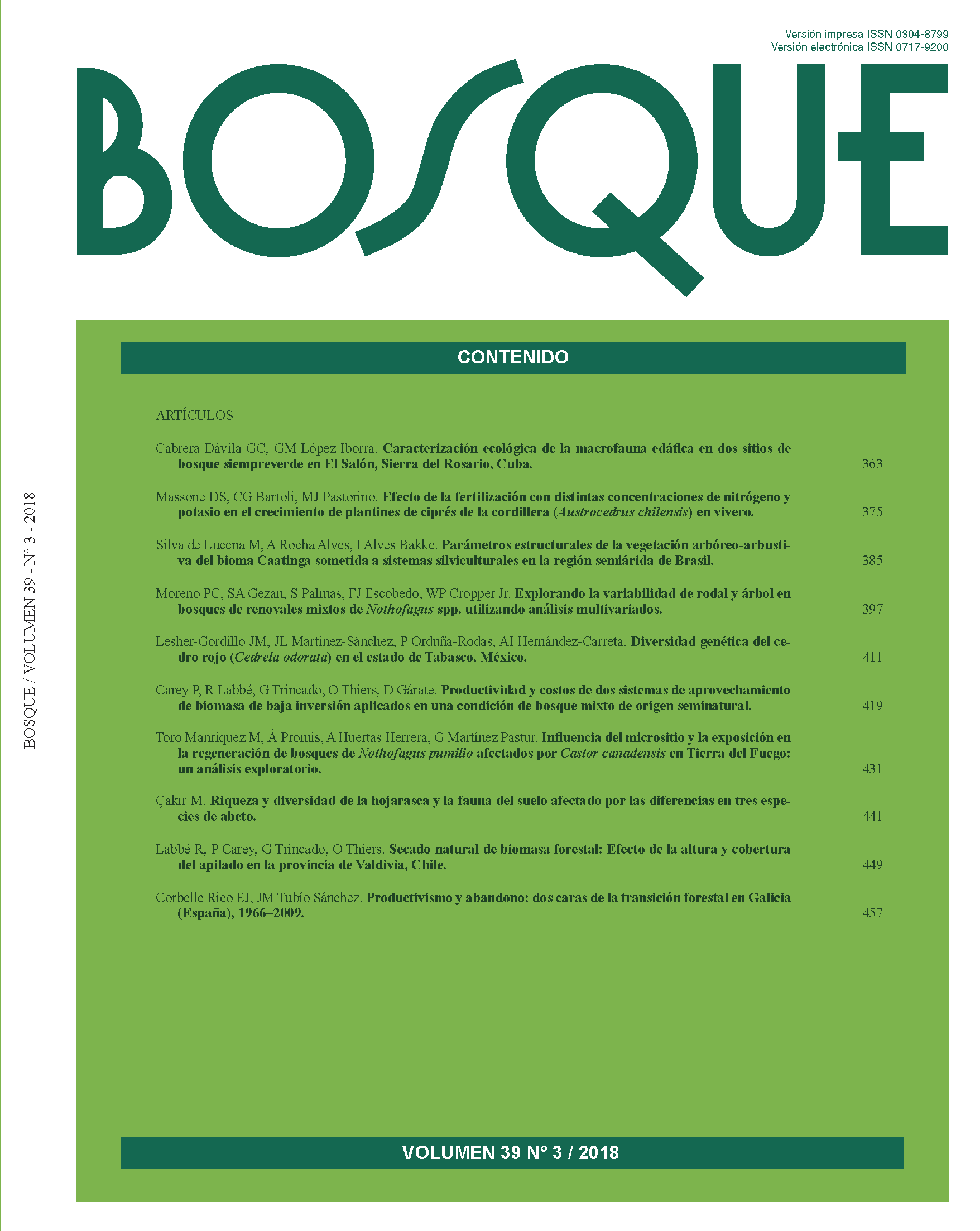Fertilization effect of different concentrations of nitrogen and potassium in the growth of Austrocedrus chilensis seedlings in nursery
Main Article Content
Abstract
Nitrogen (N) is an element with a high influence in seedling growth in the nursery. Nevertheless, absolute levels of nutrient concentration are irrelevant if the relationship among the major elements is not examined. In this work we studied the incidence of several N concentrations in two proportional relationships with potassium (K), keeping the relationship with phosphate (P) constant (i.e. 3:2:1 and 3:2:3 for N:P:K), during the rapid growing phase in the fertigation production of Austrocedrus chilensis seedlings. Seedling height, stem diameter at the collar level, total biomass, aboveground/underground biomass ratio (PSA/PSR), nutritional status and root growth potential (RGP) were measured at the end of the growing season. The two treatments combining lower concentration of N with a relationship 3:2:3 produced the highest effect on all morphological parameters assessed. The PSA/PSR was more equilibrated in the treatments with the relationship 3:2:3. The N concentration in the leaves was proportional to its concentration in the nutrient solution. The P content did not show differences among treatments, whereas the K level was higher for the treatment of lower N concentration with relationship 3:2:1. The RGP was low in all treatments. Our observations showed that the 3:2:3 relationship produced larger seedlings with a better balance of biomass partition, evidencing that the management of K in the nutrient solution has higher influence in the seedlings growth of Austrocedrus chilensis.

